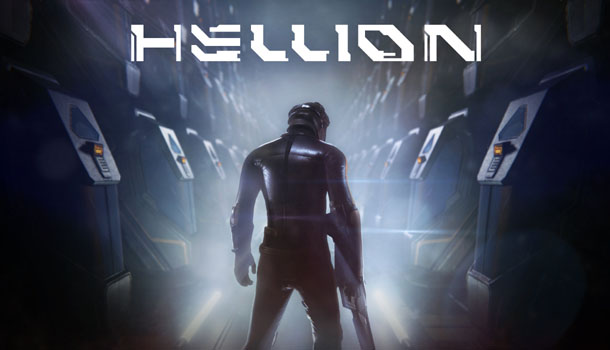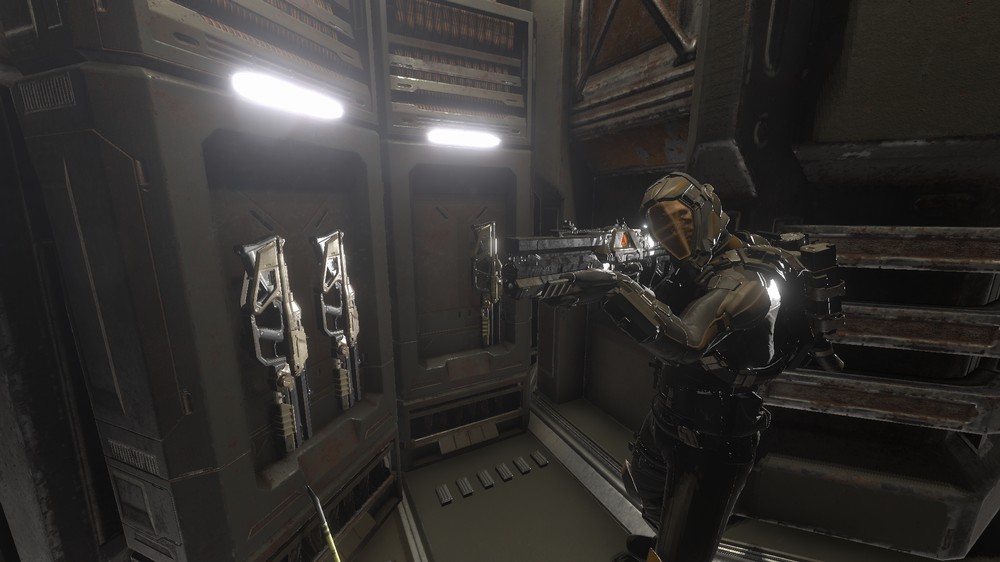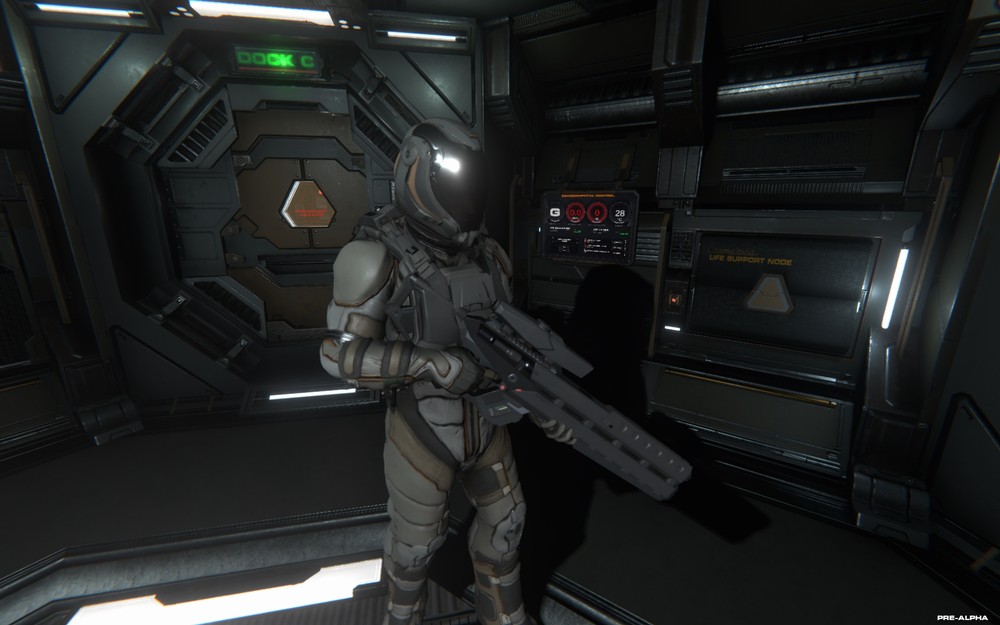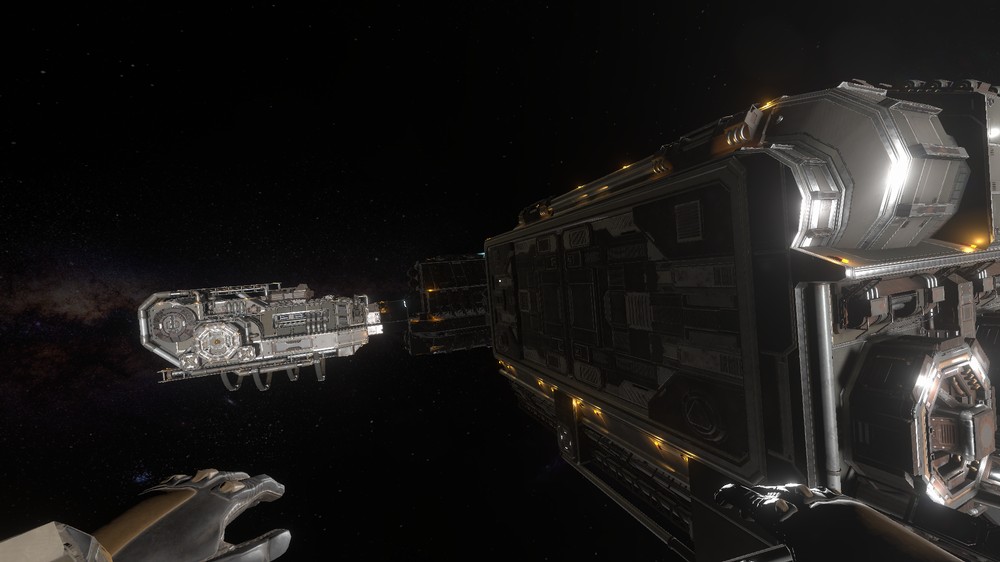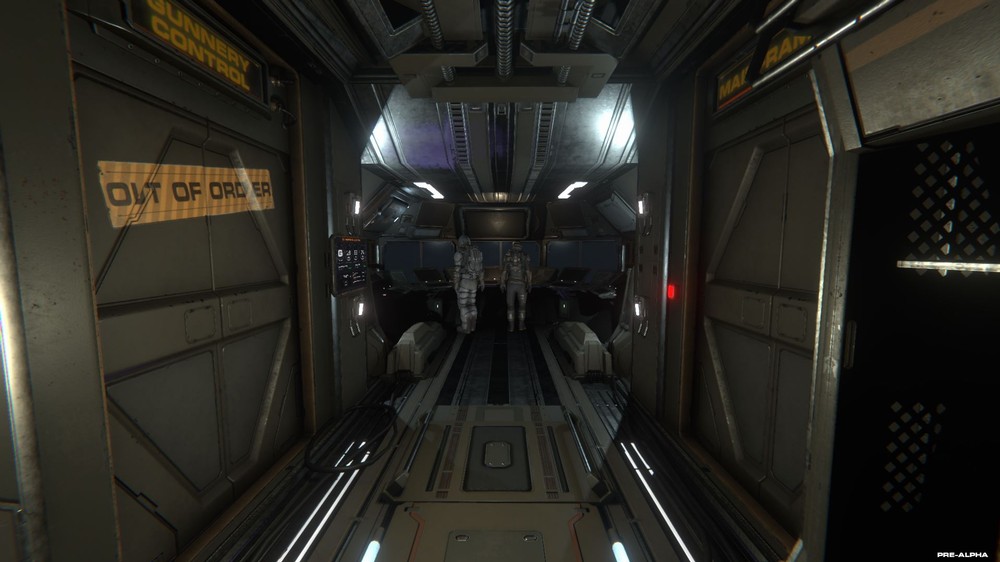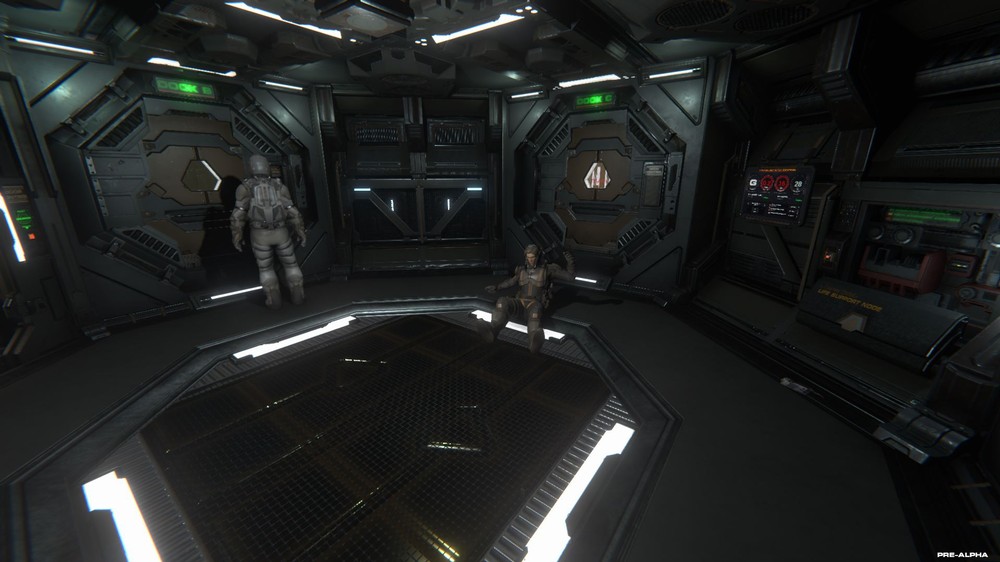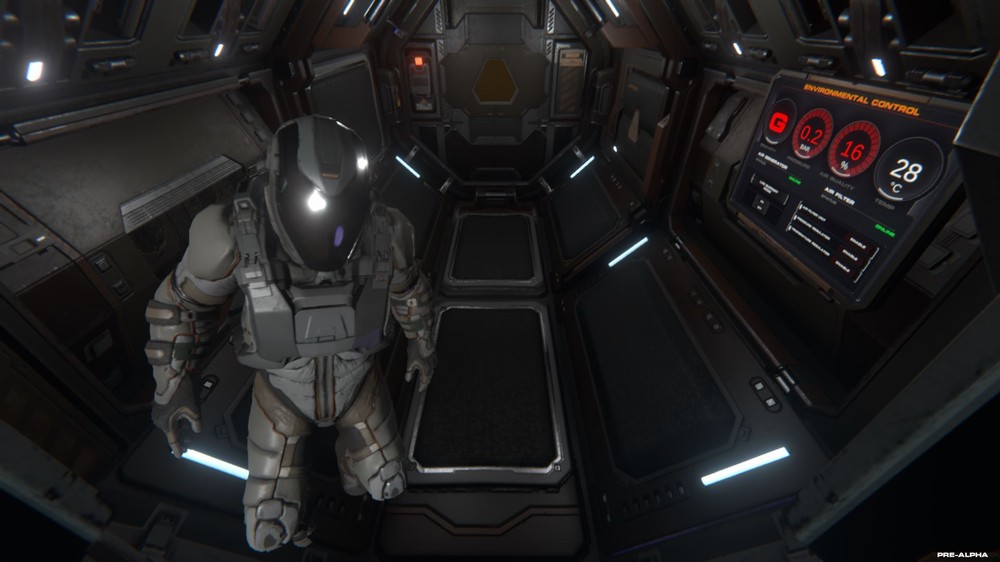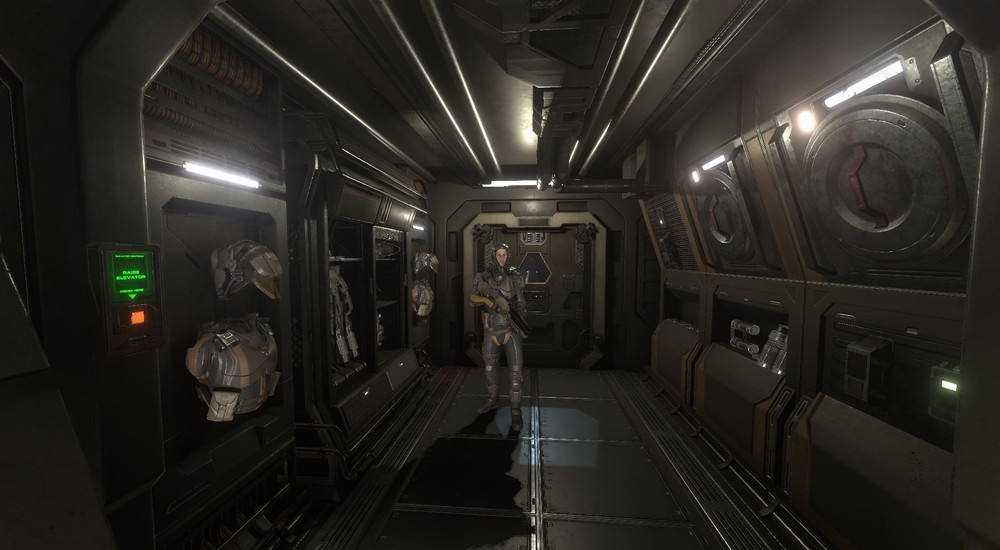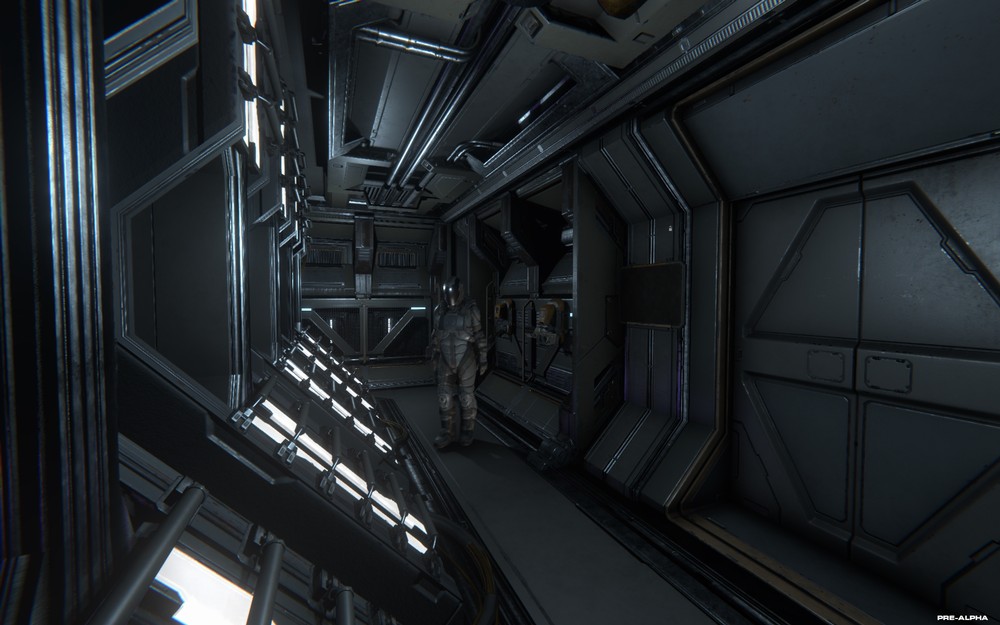This is an Early Access Review and as such opinions and scores are based solely on the state of the game at the time of review and subject to change as development progresses leading up to final release.
Writing reviews for games that are very early in their development, which have chosen to go the Early Access route, can be very challenging. I think the most important thing to keep in mind when reviewing these games is to try, as much as possible, to review the game with their perceived potential in mind. However, you still need to realize that games with lofty goals sometimes never reach their potential. This can be especially true when the game is being developed by an independent company with no known track record. There have been numerous examples of games that released with a huge amount of hype and promise only to be abandoned shortly after their initial early access release.
Hellion is best described as a survival simulator set in space. Fans of games like DayZ, Rust, Subnautica, and even Space Engineers, will feel immediately at home with the concepts behind Hellion. After joining a server of anywhere up to around 100 other players, you will find yourself in a cryo-pod aboard a somewhat derelict module floating in a somewhat random location inside a life-sized star system named, appropriately, Hellion.
Your first moments in the game are spent revitalizing the craft that you are in, bringing it back to working order. There are monitors and panels galore for you to interact with. The various machinery that keeps the craft running and keeps you and any other passengers alive are all made up of various components that wear out and need replacing. Air generators, solar panels, life support, power grids, etc., each with their own various parts that you will need to physically remove and replace with other, newer parts.
Once you get comfortable with these game mechanics, the next step is to don your space suit, helmet and jetpack and head for an airlock. The crafts, as long as they are powered properly, will be able to have an artificial gravity that allows you to walk around as you would in any other FPS game. Once you depressurize your airlock and exit the safety of your module, however, the game simulates zero gravity. I have to admit that the first time I left the starting module, my heart was pounding with anxiety. The game does a very good job of making you feel like you’re really floating in space. The controls become much less responsive and you will drift aimlessly if you don’t pay attention and stabilize your movements. Also, the game simulates sound propagation, so leaving the artificial atmosphere of the ship removes sound effects, for the most part, leaving you with only the sound of your breathing, your own heartbeat and the almost non-existent, muffled sounds of exterior events, which only adds to the tension.
My first moments outside were spent frantically watching my oxygen supply as it slowly depleted, while simultaneously looking around the void of space surrounding my claustrophobically small starting module hoping to find anything to aid my progress. The starting module is not mobile, so traveling within the vast star system to anywhere else requires finding a ship. Luckily, I spotted one about five hundred meters away from where I was. Hands slick with sweat, I boosted toward the distant object, an agoraphobic sensation of being surrounded by an ocean of nothing struck me as I drifted, almost imperceptibly, across the divide. Finally, I reached my destination. Only after using the door controls to vent the atmosphere inside the airlock, open the outer door, gain entry, and re-pressurize, did I feel comfortable enough to relax again, if only for a moment. Then I began the process of bringing the ship back to life, as I had with my starting module.
It is at this point that the game really starts and you realize that everything you’ve done up to this moment was essentially a sneaky tutorial. Your ship will be your lifeboat, your home, and where you spend a great deal of your time in game. In order to continue surviving, to refuel your engines, refill your oxygen, craft new components to replace the worn out ones in the ship, you will need to travel to asteroids and mine for materials, or seek out other ships or stations where you can scavenge the things you need. Other players will be out there doing the same things, as well, and if you run into them you can work with them, or you can try and take what you need from them by whatever means you choose.
It is this freedom of choice and uncertainty of survival that has made other games in the same genre feel so unpredictable and amazing. Hellion is no exception to that rule. That nagging feeling of being able to lose everything because of a simple mistake, or because of someone else taking advantage of you is what constantly puts you on edge. Toying with the delicate balance between trust and risk, you can try to go at surviving alone, but it will be a long and difficult process. Working with others will make it easier, but it also brings dangers.
I have to note that one of the “work in progress” features of the game is a complex voice communication system that includes localized three-dimensional voice chat as well as short- and long-range radio communications. At the time of writing this review, it seems that voice communication is not functioning, however, as I was only able to communicate with other players via the in-game text chat. From my personal experience with other multiplayer survival simulators, a good in-game voice chat is essential to a fully-realized, realistic experience. Hopefully, the game is able to get this feature working soon since, without it, it feels as empty as the space around your ship.
On top of the complexities of human interaction that give such unique flavor to these types of games, Hellion spares no expense on the challenges of merely navigating the vast, inhospitable, unforgiving expanse of deep space. The game simulates full Newtonian physics with proper orbital mechanics for all the objects floating around from asteroids, to stations, to ships, to players, to moons, to planets. Plotting an FTL course from one location to another isn’t as simple as pointing your ship in the right direction and saying “engage”. You have to plot your course using the navigation panel, which requires you to manually adjust the duration of your warp jump so that you don’t overshoot or undershoot your intended destination. Searching for things isn’t as easy as looking on a radar which will magically show you where every point of interest is. You have to conduct manual scans to locate potential objects of interest and then do more focused directed scans in order to figure out exactly what might be at that location. This game is nothing if not detail oriented. It is granular in its approach to living in space. Every machine, every system, every tool, consists of various individual components that decay from use. Every action you take in the game is, hopefully, a step toward survival, but every step is also, inevitably, a potential step closer to running out of exactly those things you need to continue surviving.
At the time of this review, the game has only been available to players for about a week. Since its initial release, there have been at least three patches that have dealt with bugs (of which there are many, still) that have been barriers to smooth, enjoyable gameplay. There are still things about the game that are frustrating not because of gameplay choices, but because they just don’t work the way they are supposed to, yet. I get the sense that the developers are working hard at trying to attain a solid baseline from which to move forward to other more advanced features that they plan on adding to the game in the indefinite future.
What the future holds for this game is just as indefinite as what it holds for its current player base. The game’s servers were initially fairly populated, but have seen a drastic decline over the course of the last few days. I am not sure if that is because of game-breaking bugs that players are waiting to have fixed before putting any more time into it, or if it is just because the game doesn’t offer as much of an experience as people were hoping for. I hope that the developers are committed to bringing the game to fruition and will not be deterred by dwindling player counts, but will push on to create the game that many people want. If they build it, as it were, the players will come back.
There is always the very real possibility that this game will suffer the same fate as many others in the same genre. That it will attain a state of base playability and then never go any further, leaving players disappointed and thinking of what could have been. I hope that this is not the case, because when I look at the potential of this game, I see something that could take its place as one of the greats in the genre. It offers something unique that most of the others don’t: a chance to survive among the stars, instead of living off the land in some post-apocalyptic wasteland, or surrounded by mutants or zombies of some kind. This game is taking a drastically different approach to a fascinating up-and-coming genre. I just hope that it pans out.
Ultimately, I would recommend keeping this game on your radar, but probably waiting to see what happens with it in the next few development cycles before committing your wallet to the cause. It’s really too early to tell what is going to happen with the game, so unless you’re a true believer and want to support the development of the game, I would advise caution.

